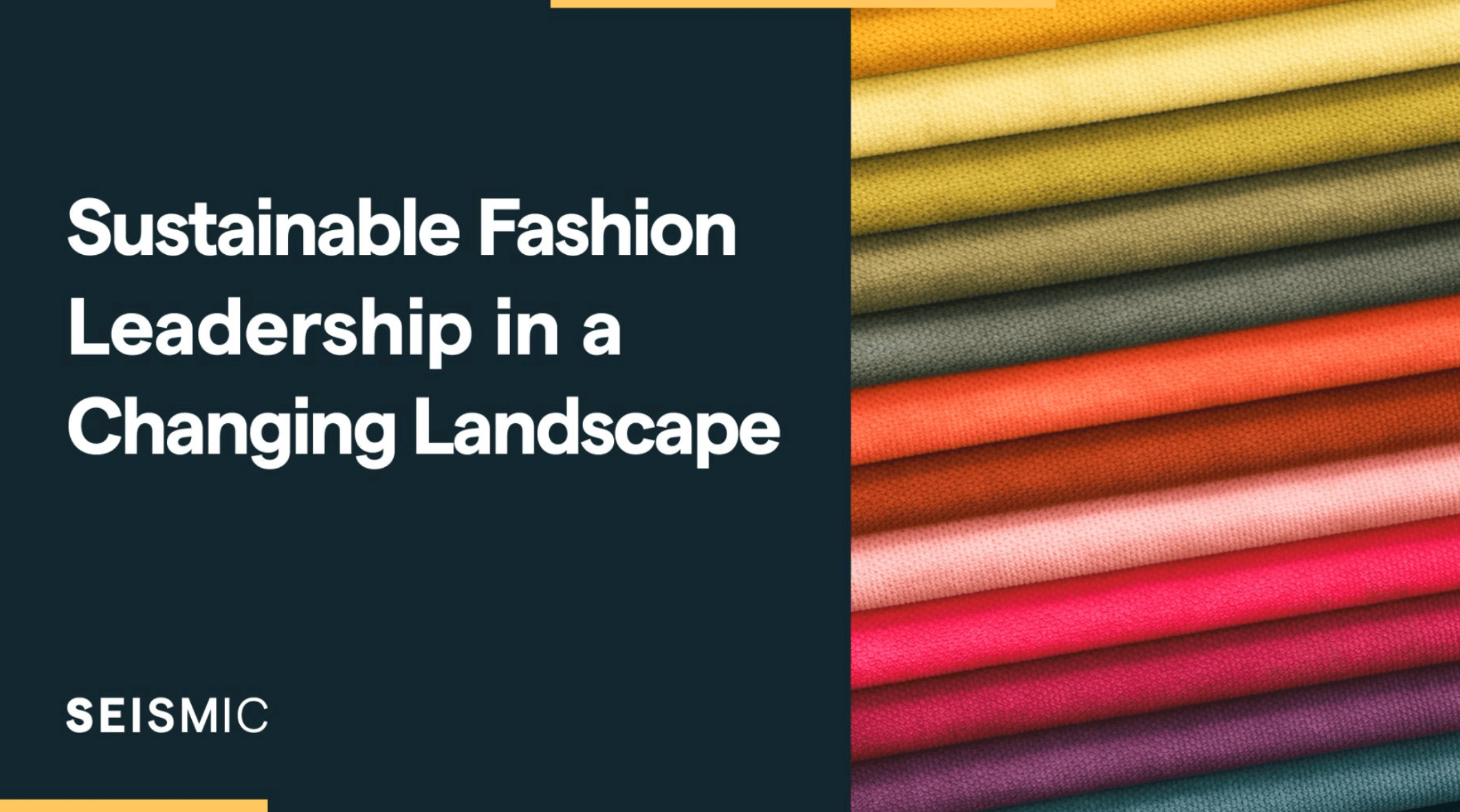
Our recent Breakfast Briefing brought together leaders from the fashion industry to discuss the challenges and opportunities in creating a more sustainable future for this dynamic sector.
Seismic’s Ro Egglesfield, Head of Impact Development, led the discussion, joined by Amy Bourbeau, Cofounder and Chief Impact Officer, and Olivia Canham, Sustainability Manager at Monica Vinader. Together, they explored the key drivers influencing impact in the industry, areas where more action is needed and how to improve social and environmental impact throughout the value chain.
The complex landscape of fashion and sustainability
Fashion, an industry that brings people and creativity together, has a significant environmental footprint. With fashion and textiles contributing 10% of global emissions, equivalent to the concrete industry and surpassing aviation and marine emissions combined, the need for urgent action is clear.
As Vivienne Westwood aptly stated, “Fashion is very important. It is life-enhancing and, like everything that gives pleasure, it is worth doing well.” This sentiment underscores the responsibility of the industry to pursue sustainability, not just as a trend, but as an integral part of its future.
The push and pull towards sustainability
Several factors are driving the fashion industry towards greater sustainability. Increasing regulations, such as the UK’s Green Claims Code and the EU’s Corporate Sustainability Reporting Directive, are pushing businesses to be more transparent and accountable for their environmental and social impact.
At the same time, shifting consumer preferences, particularly among younger generations, are pulling the industry towards more sustainable practices. By 2030, Millennials and Gen Z are projected to have greater purchasing power than Boomers (Cerulli Associates). Brands that embrace increasingly sustainable practices are better positioned to attract and retain talent, expand their customer base, and reduce operational costs.
Key challenges and opportunities
The fashion industry faces a unique set of sustainability challenges, with brands already using these as opportunities for impact, including:
- Circular solutions: Moving away from a linear “take-make-dispose” model and embracing circularity is crucial. This can be achieved through initiatives like clothing rental, repair services, and innovative material use. Platforms like the Never Fully Dressed PreLoved Platform are leading the way in facilitating circularity by enabling the resale and reuse of pre-owned fashion items.
- Transparency and reporting: Meeting the growing demand for transparency and accountability requires robust reporting frameworks and voluntary certifications like B Corp. Companies like Tiffany & Co are setting a high bar with initiatives like their Social and Environmental Accountability (SEA) program,which aims to embed responsible sourcing practices throughout their supply chain.
- Marketing and communications: Communicating sustainability efforts clearly and accurately is essential, avoiding greenwashing and engaging consumers with authentic storytelling. Brands like PANGAIA are demonstrating transparency by highlighting the specific details of their sustainable practices, such as their Nativa Regen Merino wool production process, which guarantees certification of the entire wool production process.
- Influencing demographics: Catering to the values and expectations of younger generations, who prioritise sustainability and social responsibility, is key to the industry’s future. This involves understanding their preferences and engaging them in meaningful ways, such as through initiatives that promote conscious consumption and circular fashion.
Monica Vinader: A case study in sustainable luxury
Olivia Canham, Sustainability Manager at Monica Vinader, shared her valuable insights on how the renowned jewellery brand has sought to embed sustainability. Founded in 2007, Monica Vinader is committed to crafting exquisite pieces with a conscience, fostering a meaningful connection between its makers, its wearers, and the planet.
Their approach is built on three key pillars:
- “Preserving Our Planet” through responsible sourcing and eco-conscious practices
- “Protecting Our People” by championing human rights and employee well-being
- “Inspiring Our Industry” through transparency and collaboration
Olivia highlighted the importance of a clear mission when it comes to implementing and developing a sustainability strategy, sharing her insights into engaging all internal teams as a crucial tool for success, as well as ensuring sustainability is a core part of business operations.
Olivia also offered practical advice for businesses seeking to enhance their sustainability efforts; speaking to the practicality of maintaining a proactive approach; incorporating sustainability into the design process from the outset; establishing clear goals and accountability frameworks, and embracing innovation and collaboration.
Monica Vinader’s journey demonstrates that sustainability can be successfully integrated into the luxury fashion industry. By prioritising clear goals, internal engagement, and a proactive approach, businesses can create a more responsible and resilient future.

Putting sustainability into practice
To effectively integrate sustainability, here are some key steps businesses can follow to tackle the challenges:
- Identify material issues: Conduct a double materiality assessment to understand the most significant environmental and social impacts.
- Develop a comprehensive strategy: Create a robust sustainability strategy with clear goals, timelines, and action plans.
- Engage the supply chain: Collaborate with suppliers to improve transparency and implement sustainable practices throughout the value chain.
- Empower teams: Provide education and resources to empower marketing and communications teams to effectively communicate sustainability efforts.
Creating lasting change in the fashion industry
The journey towards sustainability in the fashion industry requires commitment, collaboration, and a willingness to innovate. By embracing these principles, businesses can create a more responsible and resilient future for the industry and the planet.
As your partner for change, Seismic helps fashion brands fully embrace sustainability as a catalyst for commercial success and industry leadership. Learn more and speak with one of our experts.

